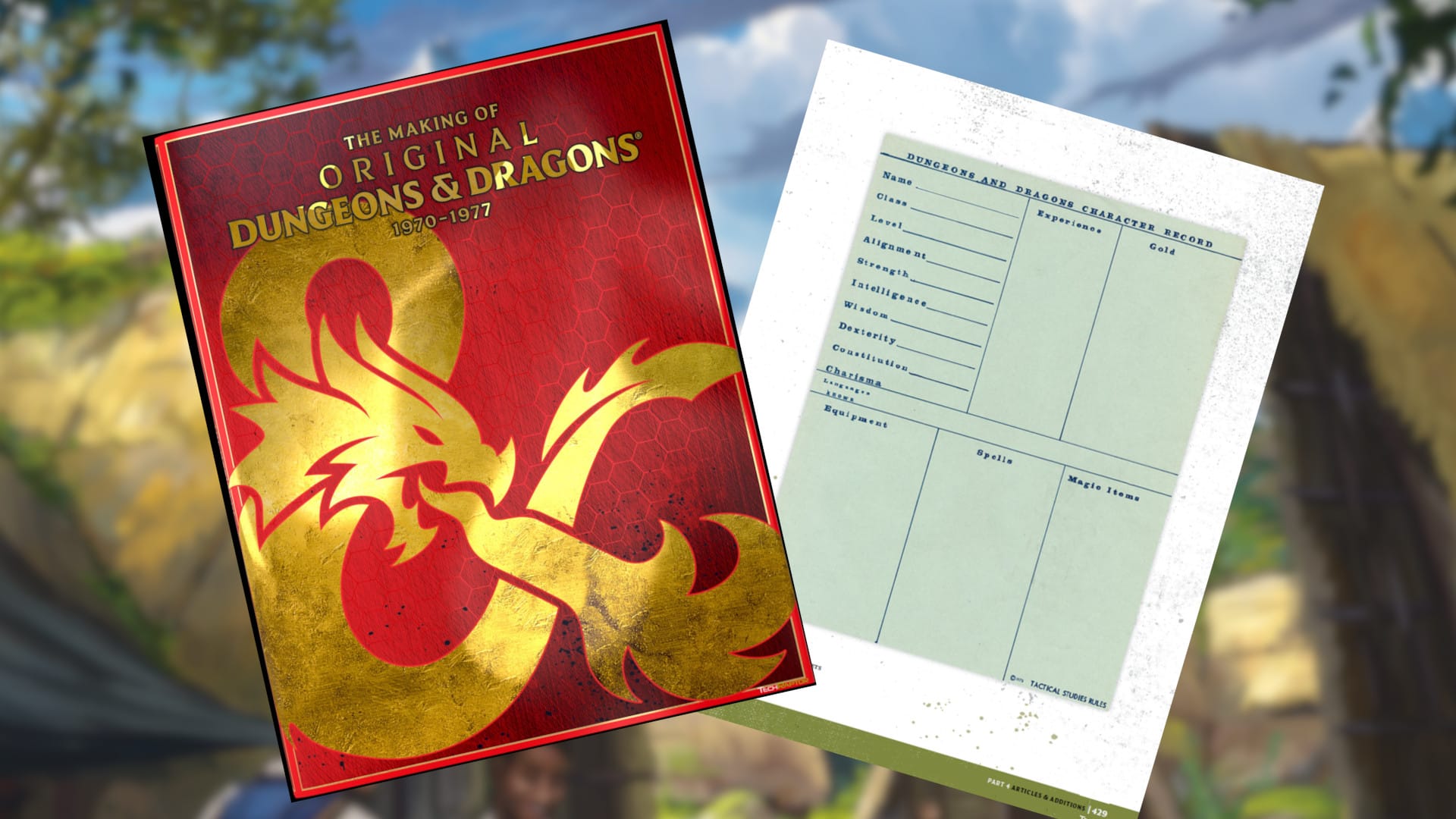2024 continues to be a massive year for Dungeons & Dragons. With the recent release of the level 10-20 adventure, Vecna: Eve of Ruin, and the upcoming Core Rulebook updates on the way there’s one more book from Wizards of the Coast releasing; The Making of Original Dungeons & Dragons 1970-1977.
Unlike other releases, this isn’t an Adventure or Sourcebook but instead is a celebration of the creation and development of Dungeons & Dragons on it’s 50th anniversary.
A few weeks ago we had a chance to sit down and hear from those involved in the creation of the book including Jason Tondro, Senior Game Designer, and Jon Peterson, D&D Historian and the Author of this book.
What is in The Making of Original Dungeons & Dragons?
The Making of Original Dungeons & Dragons 1970-1977 will be releasing on June 18th, 2024 and will be available for $99.99. This book will be 576 pages long, roughly one and a half times as large as a normal Dungeons & Dragons adventure if that’s the best reference you have to picture it.
“There are a lot of books that tell people how D&D was made, but what we wanted to do with this book was show it to you instead”
– Jason Tondro, Senior Game Designer
Tondro explained that the book sis separated into four different sections; Precursors, The 1973 Draft of Dungeons & Dragons, Original Dungeons & Dragons, and Articles & Additions. This path is meant to illustrate what kinds of Pen & Paper RPGs were already in the space and influencing Gary Gygax, all the way to the first three supplements that were released including Greyhawk, Blackmore, and Eldritch Wizardry.
On top of the resources themselves the book will also show off documents about how the game is played that Gary wrote, articles from Dragon, and even letters from Gary to show off not just what was happening directly to the game of Dungeons & Dragons but also to highlight what was happening to those in that space.
Greg Tito, Senior Communications Manager at WOTC, also took a moment to highlight that each of these sections come with their own colored ribbon to help you keep your place as you move through the massive tome.
Inception of the Idea
Jon Peterson, having written multiple D&D history books, shared to those present how their involvement came about. “Wizards reached out to me back in the spring of 2021 and asked if I had any ideas about any ideas for what they could do to honor the 50th anniversary and I said ‘Yes I do'”
“Having worked on books like Playing At The World, The Elusive Shift, Game Wizards I thought wouldn’t it be amazing to go back to all the originals. Unfortunately, some of the material that tells this story is hard to get these days.”
Peterson explained that due to the limited printings of some of these fan zines they now cost incredible amounts at auction and with this book they want to put that information in front of people and in an easier to access manner.
“If it were up to me this book would be twice as long”
“We did our best to be able to include what we could that we thought was the most essential to telling the story.”
Precursors & Inspirations
Continuing to discuss the contents of the book specific highlights were paid to games like Braunstein, a wargame about an Austrian town being invaded where player characters were given individual goals and a referee would have to make up outcomes or consequences for players unique actions and how that ended up becoming the Blackmoor setting.

Included beside this explanation is a copy of the announcement of the release of “Medieval Braunstein” and an invitation to players to play. The invitation also included that there would be “refreshments” showing that even 54 years ago the DM would end up having to step up and provide table snacks.
Comparing what was going on in Braunstein to Chainmail, which Gygax was working on, was that Braunstein would have players take on the roles of characters in a more 1:1 fashion, and not just as a human at a table commanding groups of characters. Chainmail also had its own Fantasy Supplement to add in spells and wizards of varying ability.
A Combination of Ideas
Discussing further the inspirations and pieces that would work together to become Dungeons & Dragons some other key points that were highlighted include the discussions between Arneson and his adventure in Blackmoor, Gygax working on Chainmail, and then the additional inclusion of Outdoor Survival, and Dungeon.
Each of these games were being individually worked on or developed with the awareness and investigation from one another that it made sense they would all end up coming together.
Looking through the different documents that are included it was highlighted that like an archeological dig where you can see one persons typing up of rules, with additional penwork and handwriting over it as editions shifted and addendums were made. One addendum that was pointed out was the handwritten inclusion of Sleep as a second-level Cleric spell.
Documents Of Their Time
One aspect of preserving these original documents that was pointed out was that there’s verbiage in these that include things that we wouldn’t say today. Wizards of the Coast hired inclusivity consultants to identify the language that they would want to call out.
For historical purposes they didn’t want to alter any of that material, but they did want to educate readers and call out the historical context. From there the reader is able to be informed.


